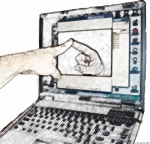|
|
The workshop will feature a panel discussion with the participation of several leading academic and industrial developers.
Invited speakers :
James Rehg (Georgia Institute of Technology )
James M. Rehg (pronounced "ray") is a Professor in the School of Interactive Computing at the Georgia Institute of Technology, where he is the Director of the Center for Behavior Imaging, co-Director of the Computational Perception Lab, and Associate Director of Research in the Center for Robotics and Intelligent Machines. He received his Ph.D. from CMU in 1995 and worked at the Cambridge Research Lab of DEC (and then Compaq) from 1995-2001, where he managed the computer vision research group. He received the National Science Foundation (NSF) CAREER award in 2001, and the Raytheon Faculty Fellowship from Georgia Tech in 2005. He and his students have received a number of best paper awards, including best student paper awards at ICML 2005 and BMVC 2010. Dr. Rehg is active in the organizing committees of the major conferences in computer vision, most-recently serving as the General co-Chair for IEEE CVPR 2009. He has served on the Editorial Board of the International Journal of Computer Vision since 2004. He has authored more than 100 peer-reviewed scientific papers and holds 23 issued US patents. Dr. Rehg is currently leading a multi-institution effort to develop the science and technology of Behavior Imaging, funded by an NSF Expedition award (see www.cbs.gatech.edu for details).
David Minnen (Oblong Industries, Inc. )
David Minnen leads Oblong's research and development efforts on markerless hand tracking and gesture recognition. David received his Ph.D. from Georgia Tech where he earned an NSF Graduate Research Fellowship and worked at Microsoft, MERL, and IBM's T.J. Watson Research Center. His research spans the areas of pattern discovery, activity recognition, and interactive vision systems.
Nick Lord (Sony Computer Entertainment Europe Limited)
Nick Lord began his career in computer vision with undergraduate majors in biomedical engineering and computer science, and a vague desire to make some use of them. That led to a PhD in the University of Florida CVGMI lab, learning about segmentation, registration, and denoising techniques, and applying them to 3D shape asymmetry analysis in medical applications. Searching for postdoc positions, he noticed a post from Phil Torr asking candidates whether working at Sony on realtime vision systems for videogames would be their dream job. Since it was in fact Nick's dream job, he took it, and hasn't yet looked back. He now works at Sony fulltime, focusing (thus far) on realtime tracking of humans and objects.
Additional panel discussion members:
Bernd Buxbaum(PMDTechnologies GmbH)
...
|

